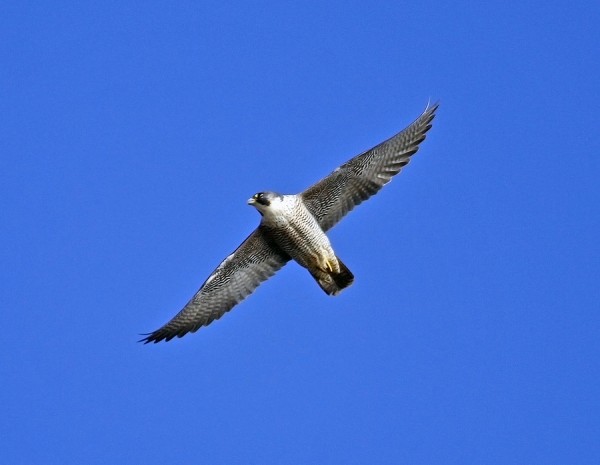
Master Hunter of Yosemite: The Peregrine Falcon
From late winter through mid-summer, some of the climbing routes in Yosemite National Park are closed by the Park Service for a very special purpose.
Peregrine falcons—without question one of the most magnificent birds in the world—nest on Yosemite’s sheer cliffs. Because these raptors are so vulnerable to disturbance when brooding, and because they’re a “special status” species in the park, climbers must steer well clear of the falcon aeries.
(If we have any rock-climbers staying with us here at Scenic Wonders, here’s the link to the Yosemite National Park page detailing this season’s climbing closures. At present, the restrictions—which affect the Arch Rock Area, B.O.L.T. Wall, Hetch Hetchy, Lost Arrow Spire, Medlicott Dome, and the Rostrum—are slated to continue until July 15 unless modified beforehand.)
A Conservation Homerun
Peregrine falcons were among the birds of prey most heavily affected by the pesticide called DDT, which, contaminating the raptor’s body, thins eggshells so severely that they shatter during incubation. Peregrine numbers plummeted in the mid-20thcentury mainly because of DDT poisoning (combined with habitat alteration, nesting disturbance, and other factors); by the early 1970s, California hosted only a handful of active aeries. In eastern North America, the falcon nearly went completely extinct.
Major conservation efforts in conjunction with the 1972 ban on DDT use have resulted in a striking recovery of the falcon. Since the late 1970s, Yosemite has been one of the most important sites in the Sierra Nevada for peregrine nesting, which occurs here at its highest density in the range. The giant granite cliffs in the park, including mighty El Capitan, provide the perfect aerie habitat for the falcons, which select high-elevation ledges protected by precipitous rock faces.
In 2009, California removed the peregrine falcon from the state endangered species list (a decade after the bird was taken off the federal list). What a turnaround for this noble bird!
The Speedster & the Wanderer
Peregrines are the speed champions of the bird world: They can attain 200 miles per hour when diving (or “stooping”) at their prey, which mostly consists of other birds.
As the Cornell Lab of Ornithology notes, “peregrine” means “wanderer,” a reference to the epic migratory journeys the falcons make between breeding range in North America and wintering grounds in Central and South America.
If you’re lucky and sharp-eyed, you may spot a Yosemite peregrine. A good pair of binoculars or a spotting scope can sometimes reveal them cruising around the high cliffs, and every once in awhile you’ll see a fast-moving blur on the heels of a jay or other unlucky songbird.
It’s wonderful to stroll the springtime meadows of Yosemite Valley, knowing that far up in the granite heights one of America’s most impressive—and precious—birds of prey is rearing the next generation!









